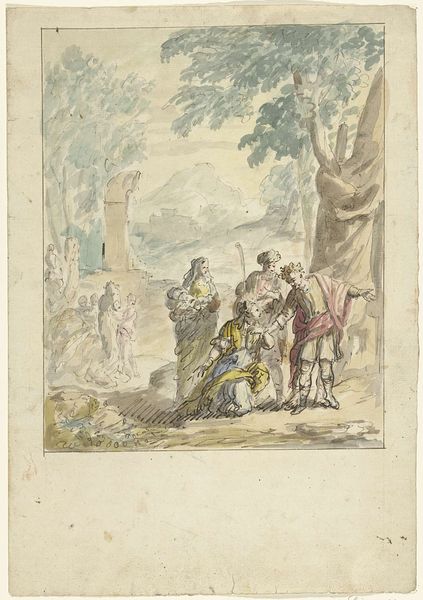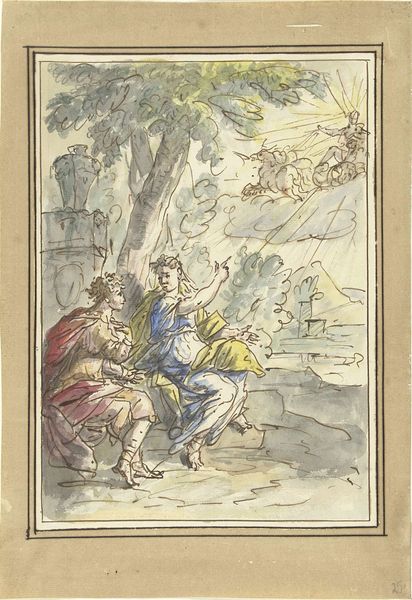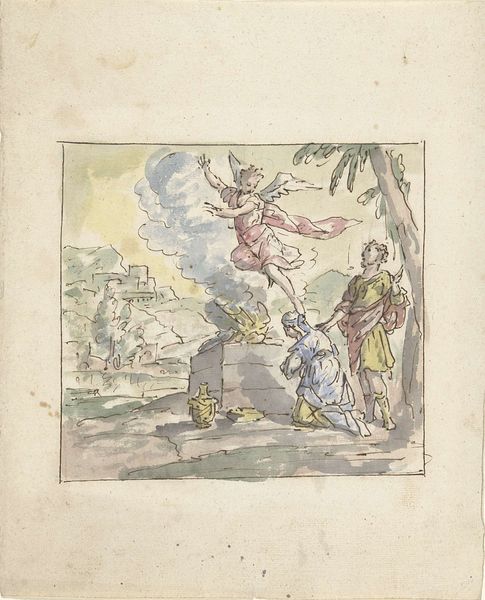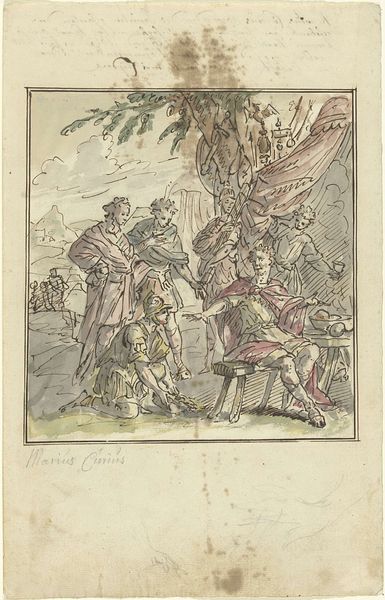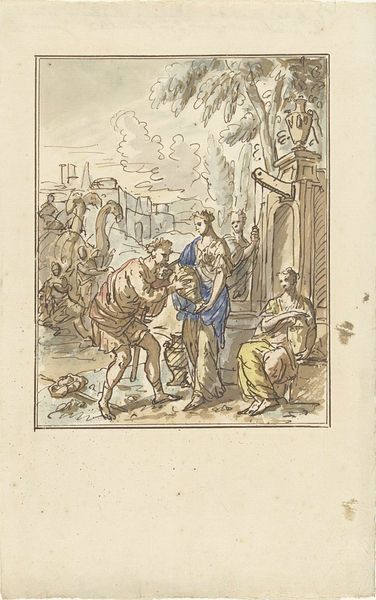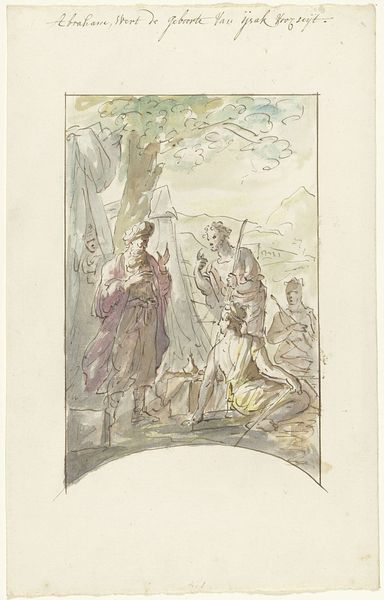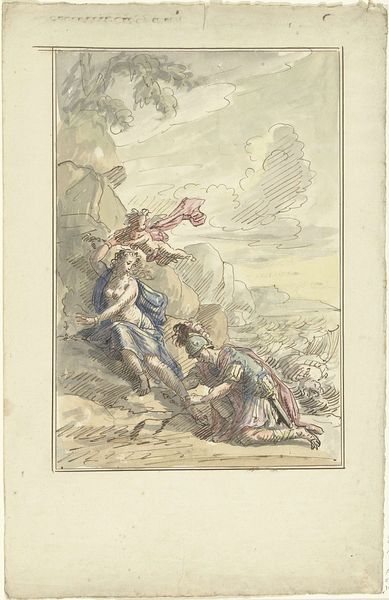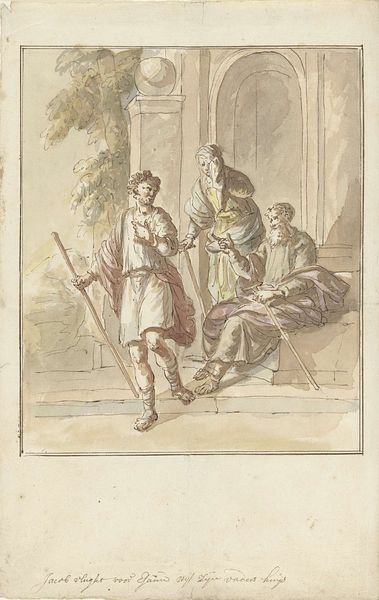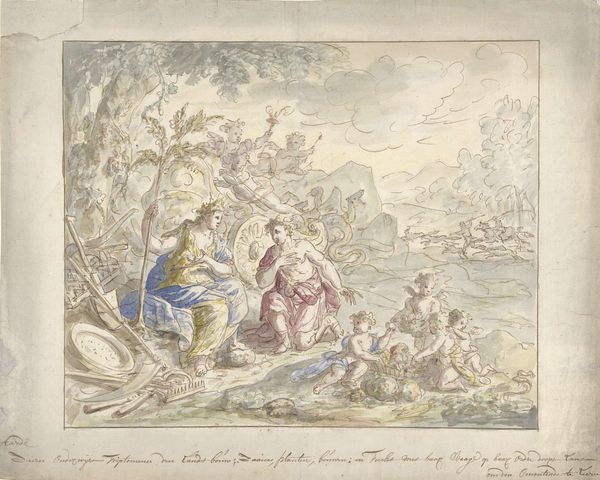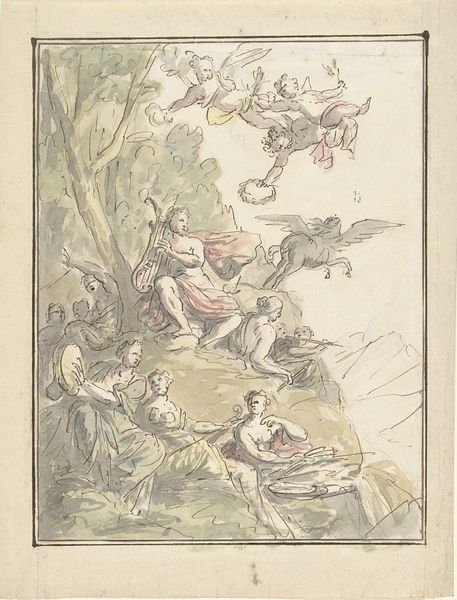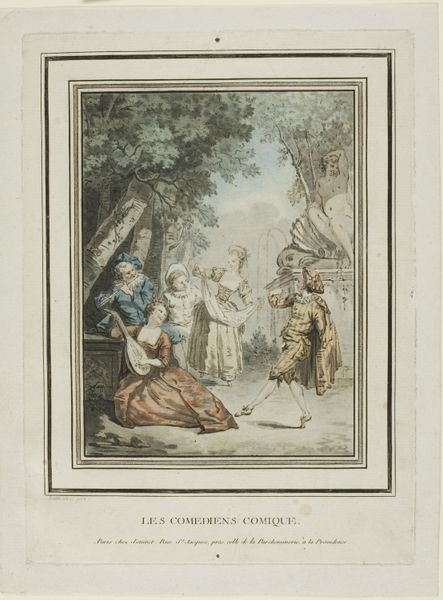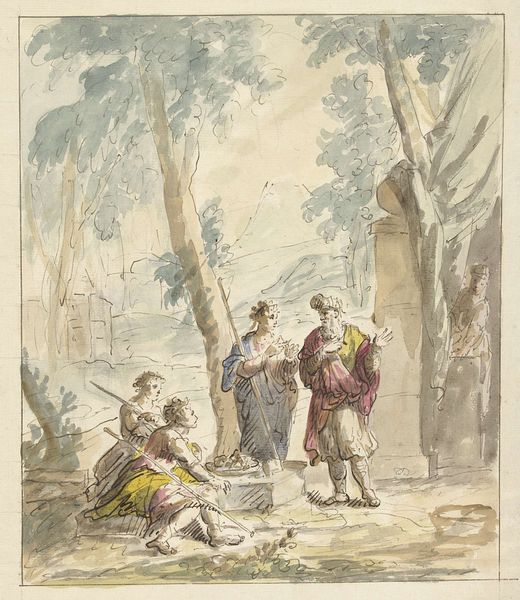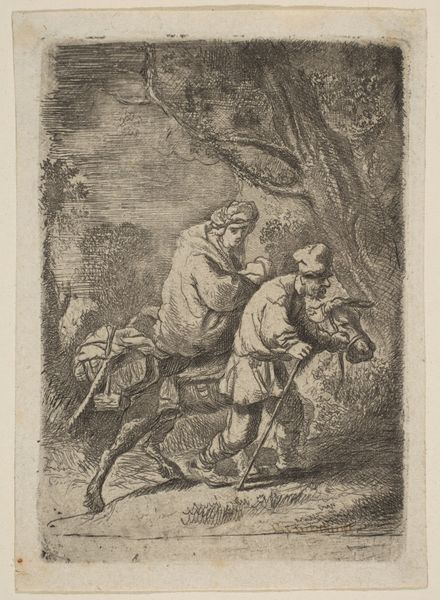
drawing, watercolor, ink, pen
#
drawing
#
narrative-art
#
pen sketch
#
figuration
#
watercolor
#
ink
#
pen
#
watercolour illustration
#
genre-painting
#
history-painting
Dimensions: height 330 mm, width 209 mm
Copyright: Rijks Museum: Open Domain
Curator: I’m struck by the stark contrasts in this piece – almost a theatrical quality despite its modest size. Editor: Indeed. What we have here is "Pyrrhus attempts to Bribe Fabricius," a pen, ink, and watercolor drawing attributed to Elias van Nijmegen, dating from sometime between 1677 and 1755. It depicts a classical scene of ethical fortitude in a corrupt world. Curator: Van Nijmegen clearly wanted to emphasize that contrast between moral uprightness and worldly temptation. See how Fabricius gestures with refusal, repelled by Pyrrhus's wealth on the table, a gesture that mirrors the little dog at his feet, also seeming to bristle. The little Cupid mischievously lifting the drape heightens that symbolic sense of unveiling temptation. Editor: I agree completely. Consider, though, the historical context in which this image would have circulated. Scenes of moral instruction, particularly drawn from classical antiquity, became increasingly popular as a sort of political critique during periods of perceived moral decline in the Dutch Republic. Visual rhetoric became an arena of social debate. Curator: So, the image operates as more than a straightforward history painting. Van Nijmegen seems to suggest universal psychological truths about human nature. Think about the symbolic weight of gold, so meticulously rendered – it has been a lure and corruptor across centuries and cultures. It makes me wonder about the original patron of the artwork, too. Editor: It does lend itself to interesting speculation. Was this destined for a public collection or a private drawing-room? Given the choice of medium – the immediacy of watercolor – I lean towards the latter. What is interesting about this moral lesson for me, it seems, depends less on a specific viewer or context but more on a broadly applicable narrative about choices. The figures are rendered with almost cartoonish grimaces and open palms as if inviting its viewers to enter its drama. Curator: An open invitation to wrestle with integrity. Editor: Precisely, and to consider the seductive persistence of power. That still rings true today, doesn’t it? Curator: Undoubtedly, which makes it eternally relevant.
Comments
No comments
Be the first to comment and join the conversation on the ultimate creative platform.

